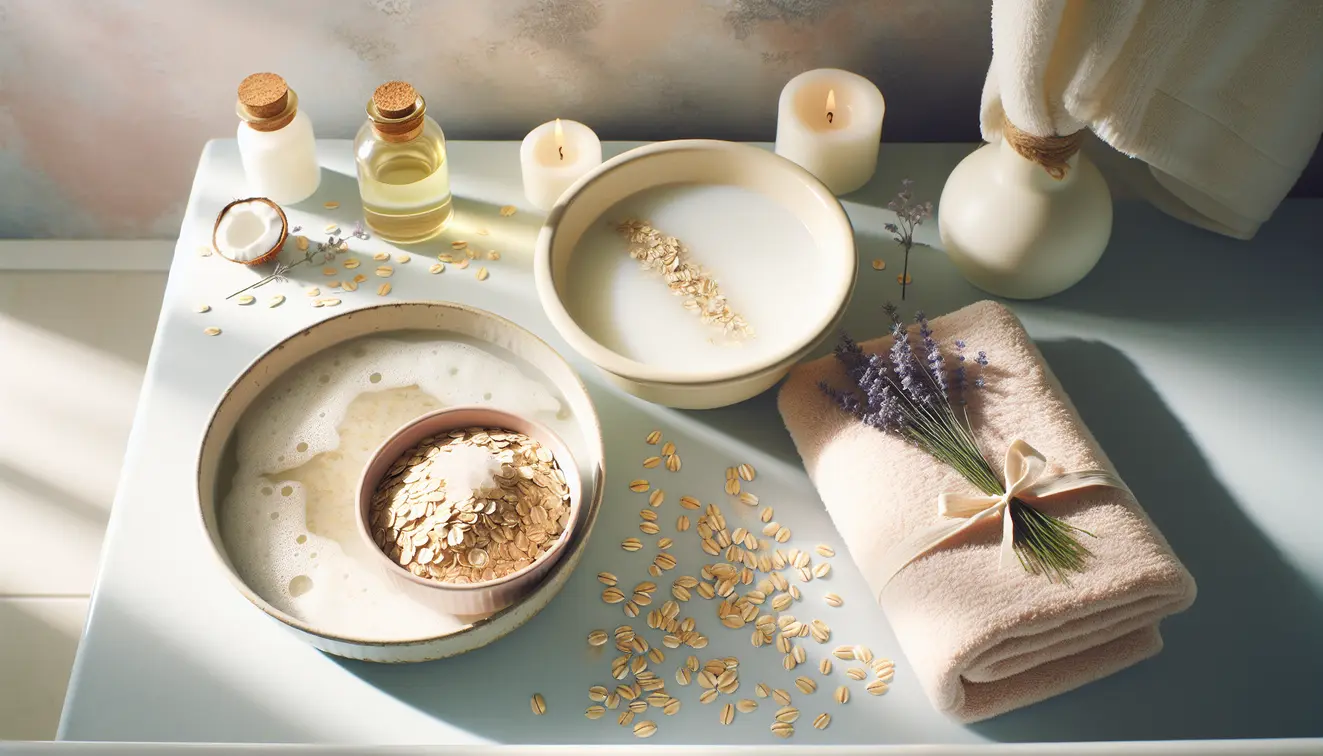Home Remedies for Itchy Vag: Safe and Natural Solutions for Relief
Estimated reading time: 8 minutes
Key Takeaways
- Vaginal itching is a common issue with multiple causes, from infections to irritants.
- Safe, natural remedies can provide relief for mild symptoms when used with caution.
- Persistent or severe itching requires medical attention to address underlying issues.
- Lifestyle and hygiene adjustments can prevent itching from recurring.
Table of Contents
- Introduction: Understanding Vaginal Itching and Finding Relief
- What Causes Vaginal Itching? Common Triggers and Symptoms
- Safety First: When to Try Home Remedies and When to Seek Medical Help
- Top 10 Safe and Effective Home Remedies for Vaginal Itching
- Lifestyle and Hygiene Tips to Prevent Vaginal Itching
- Common Myths and Unsafe Practices to Avoid
- Frequently Asked Questions (FAQs) About Vaginal Itching and Remedies
Introduction: Understanding Vaginal Itching and Finding Relief
Vaginal itching can be an uncomfortable and distressing experience for many women. It’s a common issue that often carries a sense of unease, but you’re not alone in facing it. At WikiHomeRemedies, we’re here to guide you with care, offering safe and natural solutions grounded in science to help ease your discomfort.
Our goal is to provide accessible home remedies that bring relief using nature’s healing power. While these approaches can soothe symptoms, it’s worth noting that persistent or severe itching may point to an underlying cause needing medical insight. Statistics from the National Institutes of Health suggest that a significant number of women encounter this issue at some point, so there’s no need to feel isolated.
With a commitment to your well-being, we draw on trusted research from sources like WHO and WebMD to ensure every suggestion is reliable. Let’s walk through the causes, safety considerations, and practical remedies together, helping you take charge of your health in a sustainable way. For more insights on related feminine health concerns, explore additional solutions at WikiHomeRemedies Feminine Itching.
What Causes Vaginal Itching? Common Triggers and Symptoms
Vaginal itching often stems from a variety of triggers, and understanding them can guide you toward the right relief. It might be tied to something as straightforward as an irritant or as complex as a health condition. By recognizing potential reasons, you can better navigate solutions that fit your situation, though self-diagnosis has its limits.
Many women experience this discomfort due to infections, skin conditions, or even daily habits. Alongside itching, you might notice other signs like discharge or redness that hint at the root issue. Let me break down the common causes and symptoms to help you identify what might be happening, always keeping in mind that a healthcare provider’s input is vital for ongoing concerns.
- Infections: Yeast infections or bacterial vaginosis often lead to itching, sometimes with unusual discharge or odor.
- Skin Conditions: Issues like eczema or psoriasis can affect the sensitive skin in this area, causing irritation.
- Hormonal Changes: Shifts during menopause or pregnancy may dry out tissues, sparking discomfort.
- Irritants: Soaps, detergents, or synthetic fabrics might provoke reactions in delicate skin.
- Other Factors: Conditions like diabetes or even stress can play a role in persistent itching.
If itching lingers or comes with fever or pain, it’s a signal to seek professional advice. Resources from the Mayo Clinic highlight that these varied triggers mean solutions aren’t one-size-fits-all. Let’s explore specific causes in more detail to build a clearer picture.
Infections as a Leading Cause
Infections top the list when it comes to vaginal itching for many women. Yeast infections, often caused by an overgrowth of Candida, bring intense itching paired with a thick discharge. Bacterial vaginosis, on the other hand, shifts the natural balance of bacteria, leading to irritation and sometimes a fishy odor.
These conditions thrive in warm, moist environments, making relief a priority. Trusted insights from Cleveland Clinic note that infections account for a large share of cases, but they often need targeted care. Recognizing this can steer you toward remedies that restore balance, which we’ll discuss soon. For specific natural solutions to yeast infections, check out WikiHomeRemedies Yeast Infection and for bacterial vaginosis, see WikiHomeRemedies BV Infection.
Irritants and Allergies
Sometimes, the source of itching lies in everyday products touching your skin. Harsh soaps, scented pads, or tight synthetic clothing can irritate the delicate vaginal area, sparking discomfort. Even laundry detergents with strong fragrances might leave residue that bothers sensitive skin.
This reaction isn’t uncommon, as WebMD points out that many women overlook these external culprits. Identifying and removing such irritants can bring quick relief. Later, we’ll cover hygiene practices to help shield against these triggers.
Hormonal and Health-Related Factors
Hormonal shifts, especially during menopause or pregnancy, can thin vaginal tissues, reducing moisture and causing itchiness. Beyond hormones, systemic issues like diabetes may contribute by fostering yeast growth due to higher sugar levels in bodily fluids. Even stress can indirectly worsen skin sensitivity down there.
These factors, noted by sources like Mayo Clinic, show how interconnected body systems are. Addressing lifestyle and overall health can support relief, tying into broader prevention tips we’ll share ahead.
Safety First: When to Try Home Remedies and When to Seek Medical Help
Before trying any home remedy, let’s talk safety to ensure you’re on the right path. Natural solutions can soothe mild itching, but they aren’t a substitute for professional care when symptoms escalate. Always start with small tests, like applying a remedy to a tiny area first, to avoid unwanted reactions.
It’s wise to monitor how your body responds and stop if discomfort worsens. Persistent or intense itching might signal something deeper, requiring a doctor’s expertise for proper diagnosis. Guidelines from the CDC stress that self-treatment should never delay necessary medical evaluation if certain warning signs appear.
Here are key red flags to watch for:
- Severe itching that disrupts daily life or sleep.
- Unusual discharge, odor, or color changes.
- Fever or pain alongside symptoms.
- Symptoms lasting over a week despite home care.
Your health comes first, and we encourage reaching out to a healthcare provider for clarity, especially with recurring issues. This step ensures remedies complement, not replace, expert advice as we move into natural solutions for relief.
Top 10 Safe and Effective Home Remedies for Vaginal Itching
Let’s explore ten natural remedies to ease vaginal itching, each chosen for its safety and potential to bring comfort. I’ll walk you through how they work, simple steps to apply them, and precautions to keep in mind. Rooted in insights from NIH and Mayo Clinic, these suggestions aim to support your relief journey.
Each remedy addresses specific triggers, whether it’s inflammation, infections, or dryness. Remember to pair these with the safety tips we’ve covered, and consult a doctor if symptoms persist. Here’s how you can harness nature’s power for soothing results.
Cold Compress
- How It Helps: A cold compress calms inflammation and numbs itching almost instantly.
- How to Use: Wrap a clean cloth around ice or a cold pack. Apply it gently to the area for 10 to 15 minutes.
- Precaution: Never place ice directly on skin to avoid frostbite or further irritation.
Oatmeal Bath
- How It Helps: Oatmeal has properties that reduce skin irritation through its calming effect.
- How to Use: Mix colloidal oatmeal into a lukewarm bath. Soak for about 15 minutes to let it soothe.
- Precaution: Rinse off after to avoid residue. Studies from NIH support oatmeal for skin relief. If preparing your own feels tricky, a product like Aveeno Colloidal Oatmeal can simplify the process.
Coconut Oil
- How It Helps: Virgin coconut oil hydrates skin and offers mild antifungal benefits.
- How to Use: Clean the area, then apply a thin layer externally with clean hands.
- Precaution: Stop if you notice any reaction, as some might be sensitive to it.
Apple Cider Vinegar Bath
- How It Helps: This may balance pH levels, potentially easing yeast-related itching.
- How to Use: Add 1 to 2 cups of diluted apple cider vinegar to a shallow bath. Soak for 10 minutes.
- Precaution: Don’t overdo it, as it can dry skin. Expert opinions note moderation is key.
Probiotics (Yogurt or Supplements)
- How It Helps: Probiotics restore healthy bacteria, supporting vaginal flora balance.
- How to Use: Apply plain, unsweetened yogurt externally for a cooling effect, or take oral probiotics.
- Precaution: Ensure yogurt has no sugar to avoid feeding yeast. Research from NIH backs lactobacillus benefits. A trusted option like Culturelle supplements can be a handy addition to your routine.
Aloe Vera Gel
- How It Helps: Pure aloe vera cools and moisturizes irritated skin naturally.
- How to Use: Dab a small amount of pure gel externally after a patch test elsewhere.
- Precaution: Stick to external use and avoid products with added ingredients that might irritate.
Baking Soda Bath
- How It Helps: Baking soda might neutralize pH, offering temporary relief from irritation.
- How to Use: Dissolve a quarter cup in a warm bath. Soak for 10 to 15 minutes.
- Precaution: Evidence is limited, so use sparingly to prevent disrupting natural balance.
Tea Tree Oil (Diluted)
- How It Helps: Known for antifungal and antibacterial traits, it can target infection-related itching.
- How to Use: Mix a few drops with a carrier like coconut oil. Apply externally with caution.
- Precaution: Never use undiluted, as it risks burns. Experts warn against overuse in sensitive areas.
Calendula Cream
- How It Helps: Calendula soothes with its healing and anti-inflammatory properties.
- How to Use: Apply an over-the-counter calendula cream externally, following package instructions.
- Precaution: Test on a small patch first. Studies in herbal medicine endorse calendula for skin woes. A reliable choice like Boiron Calendula Cream can make application straightforward.
Garlic (Dietary or Diluted Application)
- How It Helps: Garlic carries natural antifungal potential, helping combat yeast.
- How to Use: Boost intake through meals or use diluted garlic oil externally.
- Precaution: Direct application is debated, so prioritize diet and tread carefully with topical use.
Lifestyle and Hygiene Tips to Prevent Vaginal Itching
Beyond remedies, small changes in daily habits can prevent itching from returning. Let’s look at practical ways to protect your vaginal health over the long haul. These tips, inspired by advice from Women’s Health, focus on minimizing triggers and supporting your body’s natural balance.
- Breathable Fabrics: Choose cotton underwear to reduce moisture buildup. It allows air circulation, keeping the area dry and less prone to irritation.
- Gentle Cleansing: Skip harsh soaps or scented products that strip natural oils. Plain water or a mild, fragrance-free cleanser works best for sensitive skin.
- Avoid Douching: This disrupts healthy bacteria, often worsening issues. Your body maintains its own balance without forced cleaning.
- Hydration and Diet: Drink plenty of water and eat nutrient-rich foods. Balanced nutrition supports overall skin and tissue health.
- Stress Management: High stress can weaken immunity, indirectly affecting vaginal health. Simple mindfulness or rest can make a difference.
- Check Allergens: Swap detergents or products if itching coincides with use. Identifying irritants like latex or fragrances helps avoid flare-ups.
These steps build a foundation to complement the remedies we’ve discussed. By addressing root causes like moisture or irritants, you can sustain comfort day to day.
Common Myths and Unsafe Practices to Avoid
Misinformation about vaginal health floats around, and it’s easy to fall for quick fixes that do more harm. Let’s clear up some myths with facts grounded in guidance from WHO and Cleveland Clinic. Knowing what to steer clear of keeps your efforts safe and effective.
Many believe douching clears up itching, but it often disrupts healthy bacteria, worsening imbalances. Harsh practices can strip protective flora, leaving you more vulnerable. Stick to gentle external cleansing instead, as internal rinsing isn’t necessary or helpful.
Another misunderstanding is that undiluted essential oils are a safe cure. In reality, they can burn or irritate delicate skin, leading to bigger issues. Always dilute them with a carrier oil, and even then, use sparingly on sensitive areas.
Lastly, not all itching means a yeast infection, despite popular assumption. Hormonal shifts or allergens could be at play, and assuming the cause risks delaying proper care. Trust credible advice over untested shortcuts—this ensures you’re protecting your health at every step. For more detailed guidance on yeast infections and similar conditions, refer to WikiHomeRemedies Candida Infection.
Frequently Asked Questions (FAQs) About Vaginal Itching and Remedies
Let me address some common questions to ease any lingering doubts about vaginal itching and natural solutions. These answers aim to clarify concerns with straightforward, supportive insight.
- Can home remedies completely cure vaginal itching? They often provide relief for mild cases, but underlying infections or conditions might need medical treatment. Always monitor symptoms and seek a doctor if they persist.
- How long should I try home remedies before seeing a doctor? Give it a few days to a week. If itching worsens or lasts beyond that, professional evaluation ensures you’re addressing the true cause.
- Are there specific remedies for itching caused by menopause? Moisturizing options like coconut oil or aloe vera can help with dryness from hormonal shifts. Still, a healthcare provider might suggest additional support.
- Is it safe to use these remedies during pregnancy? Some, like cold compresses, are generally fine, but check with your doctor first. Pregnancy alters sensitivities, as noted by resources like Mayo Clinic.
- What are the risks of misdiagnosing the cause of itching at home? Guessing the trigger might delay needed care, especially for infections. Persistent symptoms deserve a closer look from a professional to avoid complications.
These points tie back to safety and tailored care we’ve covered. Your peace of mind matters, so don’t hesitate to reach out for expert input.
Supplemental Content: Quick Clarifications on Vaginal Health
Let’s wrap up with brief insights to round out your understanding of vaginal itching. These quick bites clarify key points without overloading on detail, linking to what we’ve already discussed.
- Is vaginal itching always a sign of infection? No, it can arise from irritants, dry skin, or hormonal changes just as often.
- What is vaginal flora, and why does it matter for itching? It’s the natural balance of bacteria protecting the area. Disruption can lead to irritation or infections.
- What are the main categories of home remedies for itching? They generally fall into soothing, antimicrobial, or hydrating solutions, targeting different needs.
- How do oatmeal baths compare to cold compresses for relief? Cold compresses act faster for instant calm, while oatmeal offers deeper, lasting soothing for skin.
These snippets reinforce the main ideas, ensuring you’ve got a clear grasp as you move forward with natural care. For additional natural remedies related to vaginal health challenges, visit WikiHomeRemedies Yeast Infections Women.










